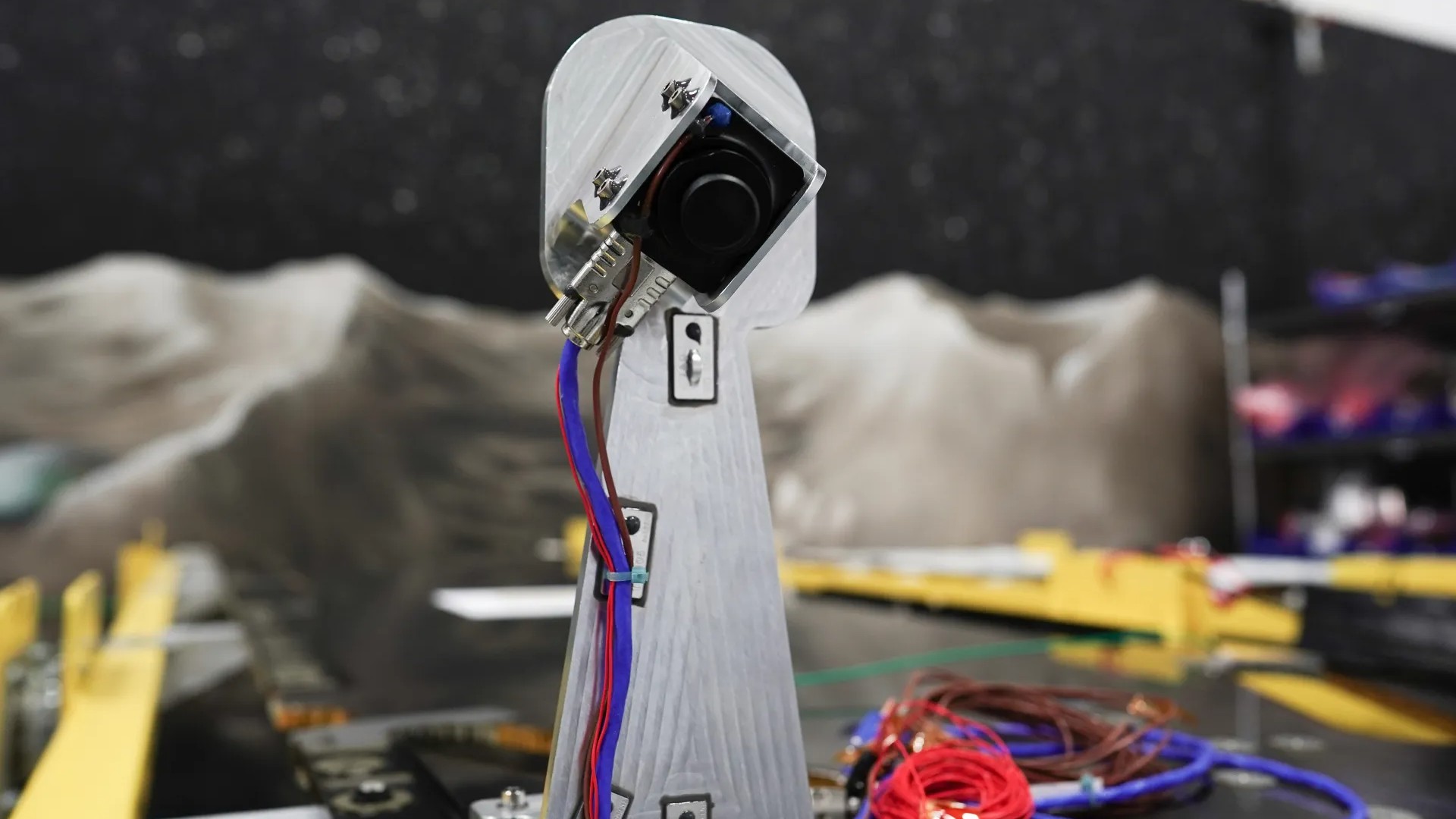Intuitive Machines' private Odysseus moon lander on track for Feb. 22 lunar landing
Next up is lunar orbit insertion, the "largest challenge to date."
The voyaging Odysseus remains on course for a moon landing this week.
The Odysseus moon lander, built by Houston company Intuitive Machines, completed two engine burns in deep space on Feb. 16 and Feb. 18 and is sailing on the right course through space, the company said on X. The mission lifted off on a a SpaceX Falcon 9 rocket early Feb. 15 from NASA's Kennedy Space Center in Florida, and all systems and science are healthy as it makes its way towards the moon.
But the lander will soon be put to the test. "Odysseus' largest challenge to date," officials added in the update thread, will be "lunar orbit insertion," which is expected to take place Wednesday (Feb. 21). The engine firing will put Odysseus in orbit around the moon in preparation for landing the following day, Thursday (Feb. 22), at 5:30 p.m. EST (2230 GMT).
Live Webcast: Watch Intuitive Machines' Odysseus attempt historic moon landing

Want to observe the moon on your own? We recommend the Celestron Astro Fi 102 as the top pick in our best beginner's telescope guide.
Odysseus aims to be the first private moon lander to safely reach the surface of the moon, following a few unsuccessful attempts by other companies in recent years. It also may be the first United States lander since the Apollo 17 crewed mission of December 1972.
Flight controllers received and analyzed data from the February 16th engine Commissioning Maneuver (CM). Data from the 21-second full-thrust mainstage engine CM confirmed Odysseus hit its 21 m/s target with approximately 0.8 m/s accuracy. The GIF below was created from images… pic.twitter.com/c0lnLikEBuFebruary 19, 2024
Its landing site is a tiny crater roughly 190 miles (300 kilometers) from the moon's south pole, about where NASA hopes to place astronauts later in the 2020s under the agency's Artemis program of lunar exploration. Artemis 3 is now scheduled to make the historic landing in 2026 or so, following a recent delay for several technical reasons.
The 12 payloads on board Odysseus include six NASA instruments as part of the agency's Commercial Lunar Payload Services program, or CLPS. This program aims to fly NASA science payloads to the moon on a set of private landers, to scout ahead of Artemis missions.
Get the Space.com Newsletter
Breaking space news, the latest updates on rocket launches, skywatching events and more!
The NASA science experiments onboard the lander will investigate matters ranging from precision landing technology to looking at how Odysseus' exhaust plume affects the regolith (rock and dirt) underneath it as it flies to the surface. Private science is on board as well, such as an investigation of insulating clothing by Columbia Sportswear.

Odysseus, whose mission is known as IM-1, is the second CLPS mission to fly in 2024. Astrobotic flew the Peregrine lander into space on Jan. 8 on board the first launch of United Launch Alliance's Vulcan Centaur rocket.
While its launch went well, a fuel leak aboard Peregrine forced controllers to aim the lander instead for a controlled destruction in Earth's atmosphere on Jan. 18.
Editor's note: This story was updated at 6:30 p.m. ET on Feb. 21 with the new target landing time of no earlier than 5:30 p.m. ET on Feb. 22.
Join our Space Forums to keep talking space on the latest missions, night sky and more! And if you have a news tip, correction or comment, let us know at: community@space.com.

Elizabeth Howell (she/her), Ph.D., was a staff writer in the spaceflight channel between 2022 and 2024 specializing in Canadian space news. She was contributing writer for Space.com for 10 years from 2012 to 2024. Elizabeth's reporting includes multiple exclusives with the White House, leading world coverage about a lost-and-found space tomato on the International Space Station, witnessing five human spaceflight launches on two continents, flying parabolic, working inside a spacesuit, and participating in a simulated Mars mission. Her latest book, "Why Am I Taller?" (ECW Press, 2022) is co-written with astronaut Dave Williams.
-
wipster Well written article! Good luck Intuitive Machines. Their stock has already doubled this week and if they stick the landing, the sky is the limit! Exciting times!Reply









